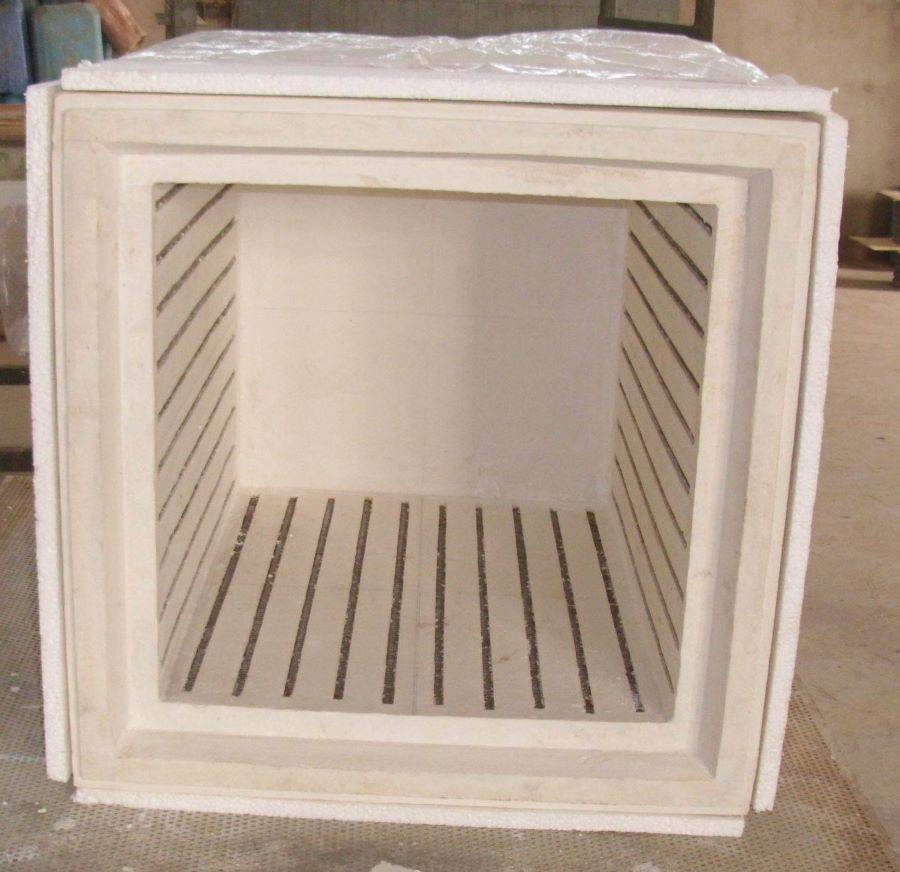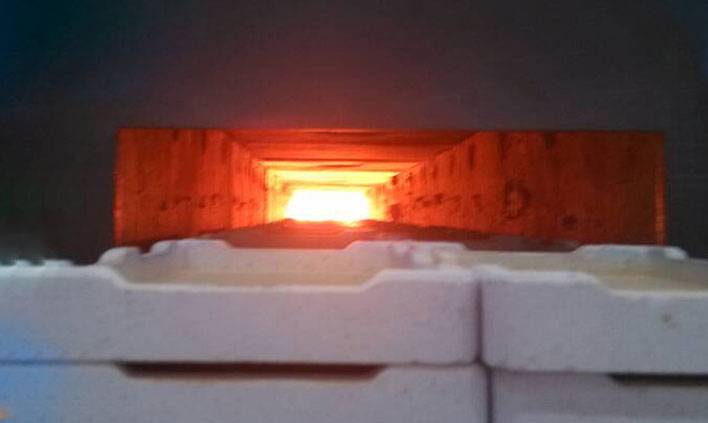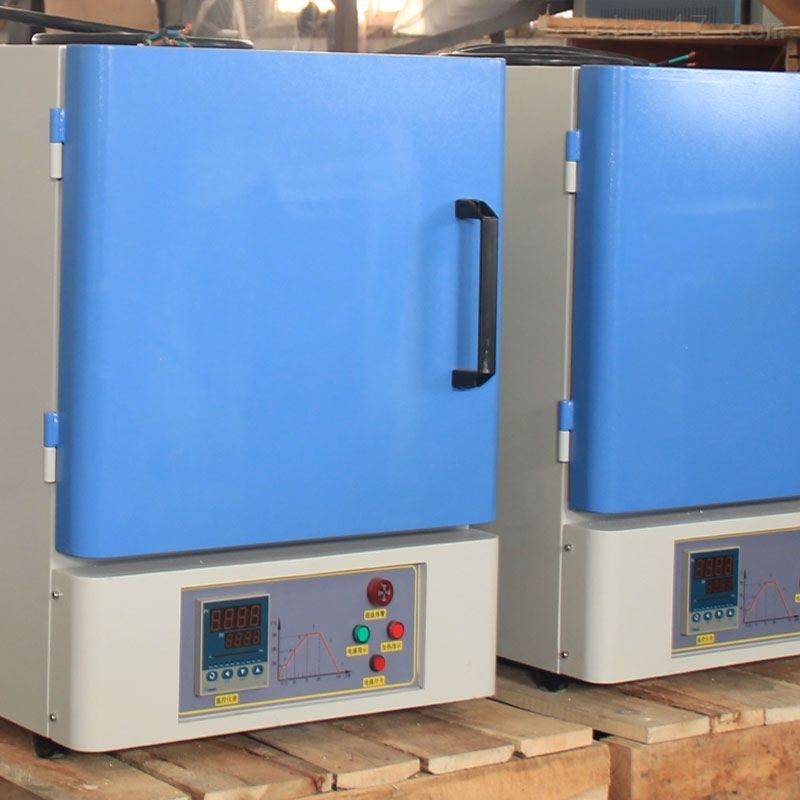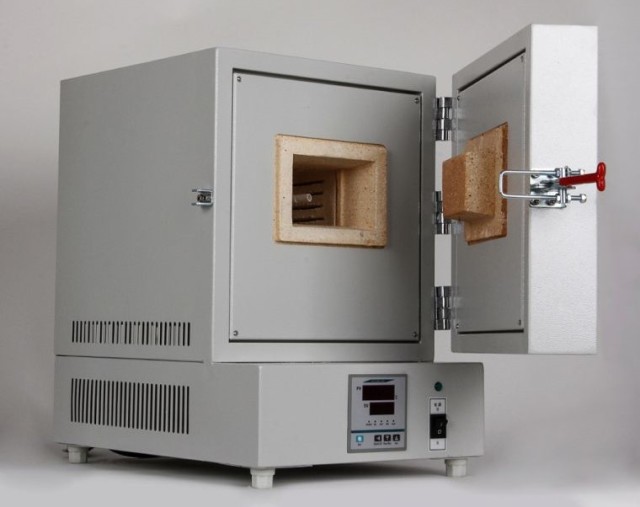Material of Muffle Furnace
Shell Material
The shell of the muffle furnace is typically constructed from high-quality steel, a material chosen for its exceptional properties in resisting high temperatures, oxidation, and corrosion. This selection ensures that the furnace can withstand the rigorous demands of high-temperature operations without compromising its structural integrity or longevity.
High-quality steel is renowned for its ability to maintain strength and stability even under extreme heat conditions. This characteristic is crucial for the muffle furnace, as it operates in environments where temperatures can soar to several hundred degrees Celsius. The steel's resistance to oxidation prevents the formation of rust and other corrosive elements, which could otherwise degrade the material over time.
Moreover, the corrosion resistance of the steel shell is essential for protecting the furnace from chemical reactions that could arise from the interaction between the furnace's materials and the substances being processed. This dual resistance to oxidation and corrosion not only enhances the furnace's durability but also reduces the need for frequent maintenance and repairs, thereby contributing to its overall cost-effectiveness.
In summary, the choice of high-quality steel for the muffle furnace shell is a strategic decision that prioritizes both performance and longevity. This material ensures that the furnace can operate efficiently and reliably, even under the most demanding high-temperature conditions, making it an ideal choice for industries requiring consistent and high-quality heat treatment processes.
Furnace Chamber Material
The furnace chamber of a muffle furnace is meticulously crafted from high-temperature refractory materials to withstand extreme conditions. These materials, which include high alumina bricks and aluminum silicate fiber, are chosen for their exceptional thermal stability and insulation properties. High alumina bricks, for instance, are renowned for their ability to maintain structural integrity at elevated temperatures, while aluminum silicate fiber offers superior thermal insulation, reducing heat loss and enhancing energy efficiency.
This combination of materials ensures that the furnace chamber remains stable and functional even under the most demanding high-temperature conditions. The high alumina bricks provide a robust and durable framework, while the aluminum silicate fiber layers offer additional insulation, protecting the chamber from thermal degradation. This dual-material approach not only enhances the furnace's performance but also extends its operational lifespan, making it a cost-effective choice in the long run.

Manufacturing Process of Muffle Furnace
Advanced Manufacturing Techniques
The manufacturing process of a muffle furnace is a sophisticated endeavor that employs a suite of advanced techniques to ensure the integrity and functionality of its components. Welding plays a pivotal role, as it is used to join various metallic parts with precision, ensuring that the structural integrity of the furnace is maintained even under extreme temperatures. This process is not merely about joining pieces together; it involves meticulous techniques to prevent any weak spots that could compromise the furnace's performance.
Heat treatment is another critical technique applied during manufacturing. This process involves heating and cooling the materials in a controlled manner to alter their physical and sometimes chemical properties. For a muffle furnace, heat treatment is essential for enhancing the material's hardness, strength, and wear resistance, which are crucial for withstanding the high-temperature operations the furnace is designed for.
Precise machining is the third cornerstone of advanced manufacturing techniques. This involves the use of computer-controlled machines to create components with exacting dimensions and tolerances. In the context of a muffle furnace, precise machining ensures that all parts fit together perfectly, creating an effective seal that prevents heat loss and maintains the internal temperature necessary for the furnace's operations. This level of precision is not just about aesthetics; it directly impacts the furnace's efficiency and longevity.
In summary, the advanced manufacturing techniques of welding, heat treatment, and precise machining are not just steps in the production process; they are integral to the creation of a muffle furnace that can perform reliably under the demanding conditions of high-temperature applications. Each technique contributes to the overall quality and performance of the furnace, ensuring that it meets the stringent requirements of modern industrial processes.
Masonry and Sealing
The masonry process in the construction of a muffle furnace is a meticulous procedure that guarantees the uniform distribution and secure fit of refractory materials. This critical step is essential for achieving optimal insulation and extending the furnace's operational lifespan. By ensuring that each refractory component is precisely positioned, the masonry process minimizes gaps and voids, thereby enhancing the overall thermal efficiency of the furnace.
Moreover, the sealing techniques employed during this phase are equally crucial. Advanced sealing methods, such as the use of specialized high-temperature resistant adhesives and gaskets, ensure that the furnace maintains its integrity under extreme conditions. This not only prevents heat leakage but also shields the internal components from environmental degradation, further contributing to the furnace's durability and reliability.
In summary, the combination of careful masonry and effective sealing is pivotal in constructing a muffle furnace that excels in both insulation and longevity. These processes collectively ensure that the furnace can withstand high-temperature operations while maintaining energy efficiency and structural stability.

Impact on Performance
High-Temperature Stability
High-quality materials and precise manufacturing processes play a pivotal role in the muffle furnace's ability to maintain stability under extreme temperatures. The furnace chamber, constructed from high-temperature refractory materials such as high alumina bricks and aluminum silicate fiber, ensures that the internal environment remains consistent even under prolonged high-temperature exposure. This stability is further bolstered by advanced manufacturing techniques, including meticulous welding and precise machining, which guarantee the seamless fit and tight seal of all components.
Moreover, the masonry process, which involves the uniform distribution and tight fitting of refractory materials, enhances the furnace's insulation properties, thereby reducing heat loss and improving energy efficiency. This meticulous attention to detail in both material selection and manufacturing ensures that the muffle furnace not only withstands high temperatures but also operates with optimal efficiency, significantly enhancing the overall effectiveness of heat treatment processes.
Energy Efficiency
Advanced manufacturing techniques play a pivotal role in enhancing the energy efficiency of muffle furnaces. By employing precision welding and meticulous heat treatment processes, manufacturers ensure that all components fit seamlessly, creating an airtight seal that minimizes heat loss. This meticulous approach not only reduces energy consumption but also extends the operational lifespan of the furnace.
Insulation is another critical factor in energy efficiency. The use of high-temperature refractory materials, such as high alumina bricks and aluminum silicate fiber, in the furnace chamber construction provides superior thermal resistance. These materials are carefully laid out during the masonry process to ensure a uniform distribution, further enhancing the furnace's ability to maintain high temperatures without excessive energy expenditure.
Moreover, advancements in manufacturing have led to the integration of smart technologies that monitor and adjust the furnace's performance in real-time. These technologies optimize the heating cycles, ensuring that the energy is used efficiently and reducing the overall operational costs. The combination of these factors results in a muffle furnace that operates with high energy efficiency, making it a cost-effective choice for industrial applications.
Impact on Price
Material Cost
The use of high-quality materials in the construction of a muffle furnace significantly impacts its initial cost. These materials, such as high-grade steel for the shell and high-temperature refractory materials for the furnace chamber, are chosen for their superior properties. High-grade steel offers excellent high-temperature resistance, oxidation resistance, and corrosion resistance, ensuring that the furnace can withstand extreme conditions without deteriorating. Similarly, refractory materials like high alumina bricks and aluminum silicate fiber are essential for maintaining stability under high-temperature conditions, which is crucial for the furnace's operational integrity.
While the upfront investment in these materials is substantial, the long-term benefits far outweigh the initial expense. High-quality materials ensure that the muffle furnace operates stably under high temperatures, improving its overall performance and efficiency. This stability translates to better heat treatment outcomes, which are vital for various industrial processes. Moreover, the durability of these materials extends the service life of the furnace, reducing the need for frequent replacements and maintenance. In essence, the higher initial cost is a strategic investment that pays off through enhanced performance and longevity, ultimately leading to greater economic benefits in the long run.

Manufacturing Cost
Advanced manufacturing processes significantly contribute to the overall cost of a muffle furnace, but these investments yield substantial returns in terms of reliability and operational efficiency. Techniques such as welding, heat treatment, and precise machining are employed to ensure that all components fit perfectly and maintain a tight seal. This meticulous assembly not only enhances the furnace's durability but also ensures that it operates seamlessly under high-temperature conditions.
Moreover, the masonry and sealing processes play a crucial role in distributing refractory materials uniformly and ensuring a tight fit, which in turn improves insulation and extends the furnace's lifespan. These advanced manufacturing techniques, while increasing initial costs, are essential for achieving the high standards of performance and energy efficiency that modern muffle furnaces are expected to deliver.
Choosing the Right Muffle Furnace
Production Needs
When selecting a muffle furnace, enterprises must consider a variety of factors to ensure that the chosen model aligns with their specific production requirements and environmental conditions. This involves a comprehensive evaluation of the furnace's capabilities, including its ability to operate under high-temperature conditions, its energy efficiency, and its overall durability.
Key Considerations:
- Temperature Range: The furnace should be capable of maintaining the required temperature range for the specific production processes, whether it's for heat treatment, annealing, or sintering.
- Environmental Conditions: The furnace must be suitable for the environmental conditions of the production site, including resistance to corrosion and oxidation, especially if the facility operates in a corrosive atmosphere or near coastal areas.
- Energy Efficiency: A furnace with advanced insulation and sealing features will reduce heat loss and lower energy consumption, which is crucial for both cost savings and environmental sustainability.
- Durability and Maintenance: High-quality materials and advanced manufacturing techniques ensure that the furnace has a longer service life and requires less frequent maintenance, reducing downtime and operational costs.
By carefully evaluating these factors, enterprises can select a muffle furnace that not only meets their immediate production needs but also supports long-term operational efficiency and cost-effectiveness.

Budget Considerations
When evaluating the cost of a muffle furnace, it's essential to consider the long-term economic benefits alongside the initial investment. High-quality materials and advanced manufacturing technologies may command a higher price tag upfront, but they often yield significant savings over the furnace's operational lifespan.
For instance, a furnace constructed with high-temperature refractory materials like high alumina bricks and aluminum silicate fiber not only ensures stability under extreme conditions but also reduces the frequency of maintenance and repairs. This translates to lower operational costs and fewer disruptions to production schedules.
Similarly, advanced manufacturing techniques such as precise welding and heat treatment enhance the furnace's energy efficiency by improving its sealing and insulation properties. This means less heat loss and lower energy consumption, which can lead to substantial savings in utility bills over time.
| Factor | Initial Cost | Long-term Benefits |
|---|---|---|
| Materials | Higher due to quality | Reduced maintenance, longer lifespan |
| Manufacturing | Higher due to precision | Improved energy efficiency, lower operational costs |
In summary, while the initial outlay for a high-quality muffle furnace may seem steep, the long-term economic advantages make it a prudent investment for any enterprise aiming for sustained productivity and cost-efficiency.
Performance Requirements
Ensuring the muffle furnace has the necessary performance attributes is crucial for its effective operation and longevity. Key performance requirements include high-temperature resistance, excellent insulation, and thermal stability. These attributes are not only essential for maintaining the furnace's structural integrity under extreme conditions but also for optimizing its energy efficiency and operational lifespan.
High-temperature resistance is a fundamental characteristic that ensures the furnace can withstand the intense heat generated during operation. This resistance is primarily provided by the high-quality materials used in the construction of the furnace chamber, such as high alumina bricks and aluminum silicate fiber. These materials are chosen for their ability to remain stable and functional under prolonged exposure to high temperatures.
Good insulation is another critical factor that impacts the furnace's performance. Effective insulation minimizes heat loss, thereby improving energy efficiency and reducing operational costs. The masonry and sealing processes, which involve the precise fitting of refractory materials, play a significant role in enhancing the furnace's insulation capabilities. This meticulous process ensures that the heat generated within the furnace is contained, allowing for more controlled and efficient heat treatment.
In summary, the performance of a muffle furnace is heavily influenced by its ability to resist high temperatures and maintain effective insulation. These attributes not only enhance the furnace's operational efficiency but also contribute to its overall durability and cost-effectiveness in the long run.
Related Products
- 1700℃ Muffle Oven Furnace for Laboratory
- 1400℃ Muffle Oven Furnace for Laboratory
- 1200℃ Muffle Furnace Oven for Laboratory
- 1800℃ Muffle Oven Furnace for Laboratory
- Engineering Advanced Fine Alumina Al2O3 Ceramic Crucible for Laboratory Muffle Furnace
Related Articles
- Muffle Furnace: Unraveling the Secrets of Uniform Heating and Controlled Atmosphere
- Beyond 1000°C: How Precision Furnaces Conquer the Hidden Enemy of Repeatable Results
- Why Your High-Temperature Experiments Fail: The Furnace Flaw Most Labs Overlook
- Advanced Laboratory Furnaces: Box, Muffle, and Tube Options for High-Temperature Applications
- Muffle vs. Tube Furnace: How the Right Choice Prevents Catastrophic Lab Failure




















